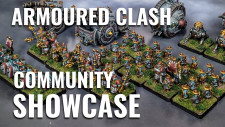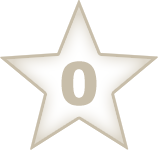Rogue Stars
Review: Thoughts on Rogue Stars
May 28, 2018 by robsaunders
This Review Was Edited
Related Review Types
Supported by (Turn Off)
Supported by (Turn Off)
If you're a fan of miniatures wargames I'd imagine that you probably have at least one book published by Osprey Publishing in your collection. They started by publishing military history books but a few years ago moved into wargaming - and even more recently board and card games. They now boast an extremely impressive selection of wargame rules, including some of the most popular games of the genre at the moment including the excellent WWII game Bolt Action and Fantasy Skirmisher Frostgrave.
In late 2016 year Osprey released the seventeenth addition in their Osprey Wargames Series of books Rogue Stars a Sci-Fi skirmish rule set designed by prolific games designer Andrea Sfiligoi the creator of the extremely popular Fantasy Skirmish rules A Song Of Blades & Heroes amongst many others.
As soon as Rogue Stars was announced I was chomping at the bit to get my hands on it. It looked exactly like kind of game I have been waiting years for. A character driven miniatures neutral old school inspired miniature game. It looked set to be Frostgrave in space. I managed to pick up a copy as soon as it was released but what I got wasn't exactly what I was expecting. It was, in fact, much much better than I hoped.
Where Frostgrave is a fairly lightweight, if extremely fun, skirmish game, Rogue Stars is much more akin to a role-playing game combat system. Much heavier and slower paced but don't let that put you off giving Rogue Stars a try. Despite the depth of the rules it never feels overly complex and every game I have played felt massively cinematic with awesome, stand out moments happening throughout. It really feels like a firefight in an action movie.
Each player in a game of Rogue Stars takes control of a Squad of between 3-6 miniatures. A very small figure count meaning that most people wouldn't struggle putting together a collection for the game.
The game runs off D20s. I know there are people who dislike the D20 because of how "swingy" they can be, but personally I'm a fan. I think the unpredictability of a 20 sider really adds to the cinematic feel of a game, no roll is a given.
For me the real stand-out mechanic in the game is how initiative works. At the start of the game players roll off to see who gets the first turn, much like any game. But in your turn you can activate your models as many times as you like. But this comes at a price, the more you activate your models the more likely your opponent will be able to react or steal the initiative from you. This leads to a really fun and tense push your luck element to activating your characters in the game. It also means that you never feel like you are sitting their twiddling your thumbs while your opponent take their turn, your're always watching for the perfect moment to steal the initiative.
Another excellent aspect of Rogue Stars is it's detailed squad creation system. It has been specifically designed so you can use whatever Sci-Fi miniatures you like. Instead of the usual stat line you see in many games characters in your squad are defined by traits that effect them in game. You also have the usual list of weapons and armour to chose from and an awesome selection of gadgets and gizmos to round your characters out. These character creation rules really make each model in your squad seem feel unique with it's own personality. There are different theme, such as Bounty Hunters, Pirates and Star Cops, for your squad to choose from giving them access to different traits and weapons, again give each squad a unique and thematic feel. There is also a points system (or XP as it's known in Rogue Stars) to build your squads but I think that this isn't really game about creating a great narrative rather than balance, so I would only use XP as a rough guide.
Despite being designed as model neutral regular Osprey collaborators North Star Military Figures have created a great range of miniatures specifically for Rogue Stars including some excellent, thematic characters. Worth a look for any Sc-Fi gamer.
As much as I love Rogue Stars there are few aspects that I struggled with at first. The damage system feels rather clunky, incorporating hit locations and different injury effects and there is a lot of in game book keeping. You keep track of how many many Stress tokens, Wound Tokens Pin Tokens and any situation effects that each model has. But as daunting as that may sound at first it is actually not that hard to do in practice. These are small gripes though for a game that always seems to play quickly and as you only have a very small model count per-side the book keeping never really becomes much of an issue.
This little run down only really scratches the surface of what you can do with Rogue Stars. For a rule book that is only 64 pages long it really is a deep and rewarding game experience! Full of different scenarios, environments to play games on and other in game effects make everygame of Rogue Stars feel unique.
Many people have compared Rogue Stars to Warhammer 40,000: Rogue Trader (the name surely has to be a nod) but I feel it has a lot more in common with Bryan Ansells pre-40k character based miniatures RPG Laserburn.
Rogue Stars really has an old school RPG feel and I am already planning games where I act as a GM, adding a different element to the game. It's not really a game for new comers to wargaming but for people looking to play out some awesome cinematic firefight on the tabletop I couldn't recommend Rogue Stars enough.














































Leave a Reply